Doll is a toy that looks like a human being. Dolls vary in size from smaller than 1/2 inch (1.3 centimeters) to larger than life-sized. Dolls can be made of nearly any material, including cloth, porcelain, wood, wax, and plastic.
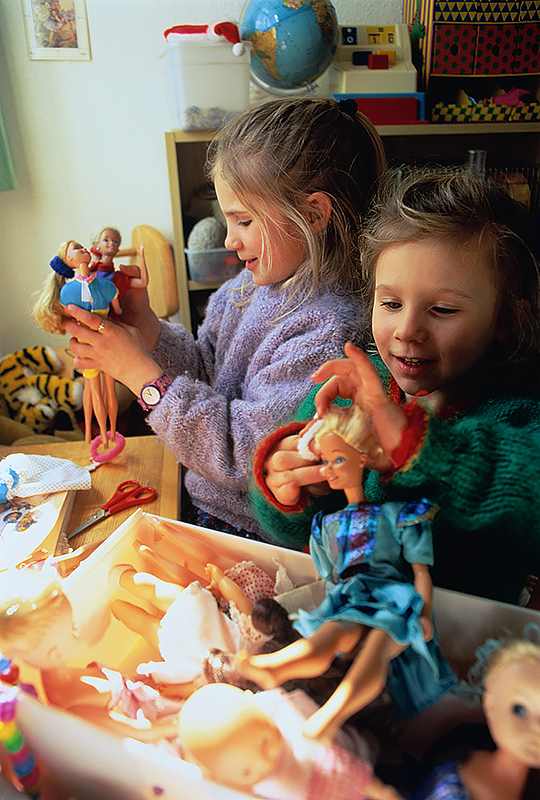
Children all over the world enjoy playing with dolls. Many grown-ups collect foreign and antique dolls as a hobby and learn about people of other times and places.
Dolls serve as playmates and objects for a child’s affection. Playing with dolls allows children to rehearse the roles they may play when they grow-up, such as parent or doctor. Dolls can provide an outlet for a child’s emotions. Child psychologists use dolls to help them identify and treat children’s problems.
Doll-like figures have existed since ancient times. Most figures from early periods were magical or religious objects. Ancient people made human figures as idols or fetishes (objects with magical power). Later, Christians made doll-like statues of saints. For Christmas displays, they also fashioned doll-like statues that were arranged to show the scene at Jesus’s birth, called creches or nativity scenes. These scenes could have a large number of characters in hand-crafted clothing.
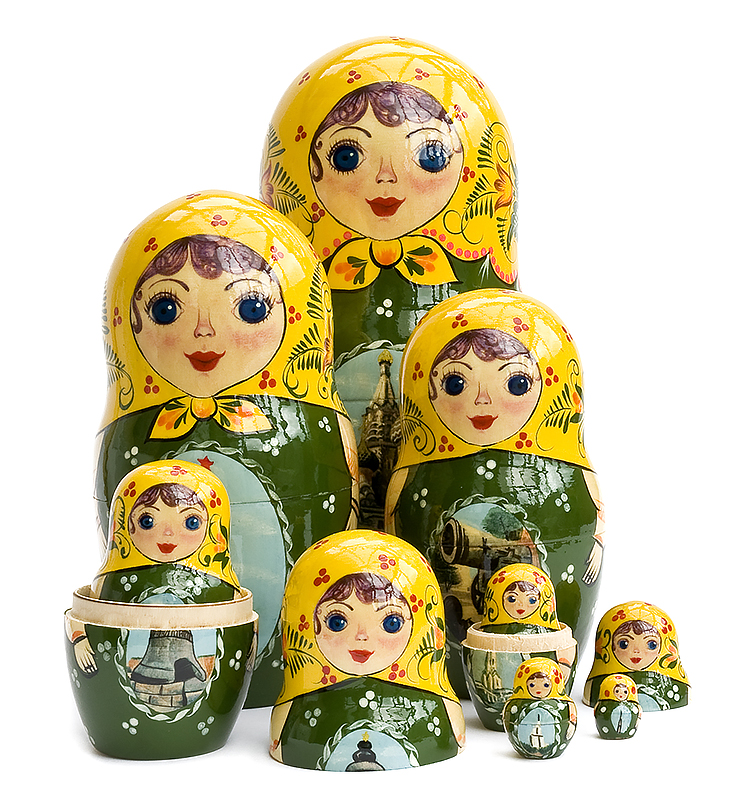
Before the 1700’s, childhood as we understand it did not exist. Youngsters were treated as little adults and expected to act like adults. This included children sharing in the work of supporting the family. Therefore, dolls made before the 1700’s served as playthings for adults as well as for children.
Childhood first began to be regarded as a special time during the 1700’s. The first dolls created specifically for children were made then. The word doll came into general use about 1750. It may have come from the Greek word eidolon, meaning idol, or from Dolly, a nickname for Dorothy. Before 1750, English-speaking people called dolls puppets or babies, even though most dolls represented adults. The first doll designed to look like a baby came from Japan. This doll appeared at the Great Exhibition of 1851 in London.
Dolls around the world
Many manufactured dolls, including baby dolls, are the same throughout the world. But other dolls vary from country to country. These dolls include costume dolls and traditional dolls.
Costume dolls
are dressed in the national or regional costumes of various countries. Many of the costumes worn by these dolls may represent holiday dress or work uniforms. Some costume dolls, however, wear clothing like that worn every day by many people of a particular country. For example, a doll representing a girl or woman from India might wear a sari—a long piece of cloth draped around the body.

Most costume dolls are not toys. Instead, the dolls are made to be sold as souvenirs. Dolls in local costume became a commercial item in the late 1800’s, when travel became easier and the tourist trade began to develop. To create souvenir dolls, most countries originally imported dolls from France and Germany, the leading doll-making nations of the time, and dressed the dolls in local costumes. In countries where most people had dark skin, fair-skinned imported dolls sometimes were tinted brown. Eventually, most countries began to make their own costume dolls.
Traditional dolls,
or folk dolls, may also be dressed in regional costumes. But unlike most costume dolls, which are made in factories, folk dolls are made by local craftworkers using traditional handicraft skills. Most folk dolls are created from whatever materials are readily available in the area. For example, the Inuit make dolls from sealskin. People in tropical regions weave dolls from palm leaves. Other materials used for folk dolls include clay, cloth, corncobs, deerskin, flowers, nuts, straw, and wood.
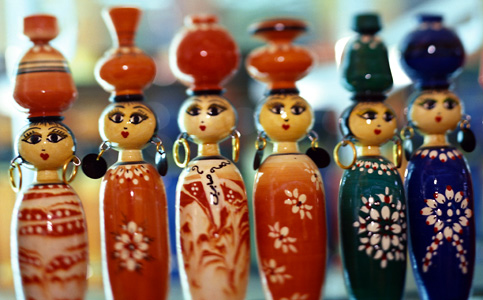
Few peoples or countries outside Europe had traditional dolls until they came into contact with European cultures. Japan was one of the exceptions. Dolls were being made and played with in Japan perhaps as early as the 1000’s. Traditional Japanese dolls include round figures with rotating heads and figures of chubby baby boys. Doll making is an art in Japan, and skilled doll makers teach it at schools throughout the country.
Most other cultures began to develop their own traditional dolls after contact with Europe occurred. For example, the Sioux and other Indians of the Great Plains began to make dolls from deerskin. These dolls were decorated with glass beads and dyed porcupine quills. American Indians still make dolls in this way.
African craftworkers make dolls of such native material as clay, feathers, and wood. Some dolls include discarded objects that the doll makers have found and reused. For example, some dolls have been made from various kinds of empty containers or even from old shoes.
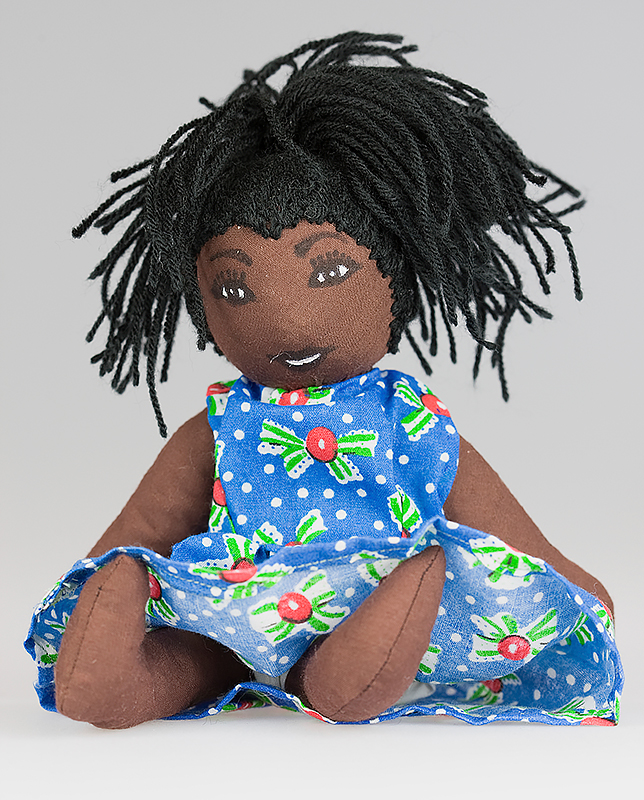
Russian craftworkers use pine cones and twigs to form traditional dolls known as moss men. The dolls’ name comes from their dried-moss cloaks. Another traditional Russian doll, the matryoshka, is a set of four or more hollow wooden dolls that nest within one another. The Russians also made dolls out of triangular pieces of wood that were carved and painted.
Doll festivals and customs
People use dolls for religious and magical purposes. Some nations hold national festivals featuring dolls.
Dolls in festivals.
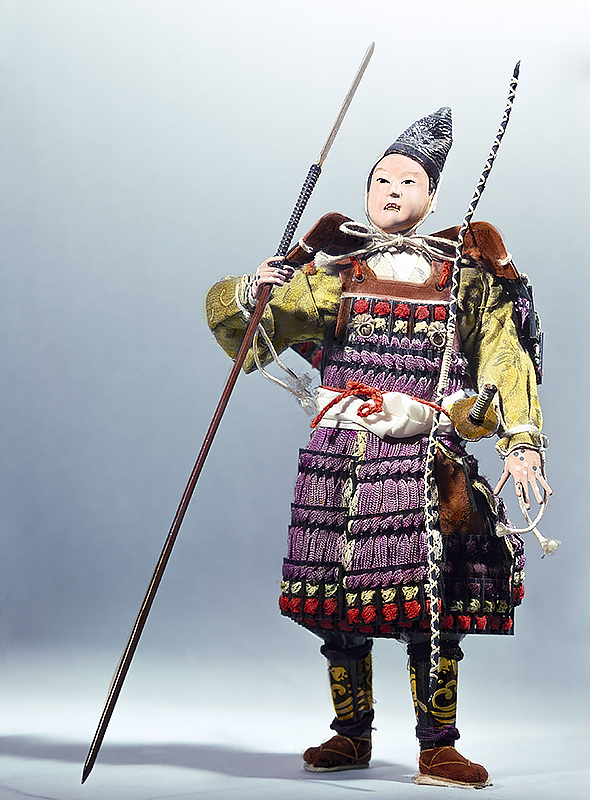
The Japanese celebrate two yearly festivals featuring dolls. A Japanese doll festival (Hina-matsuri), sometimes called Girls’ Day, is held on March 3. Dolls displayed at this festival represent Japan’s emperor and empress and members of their court. The dolls are displayed on a series of steps covered in red cloth. May 5 was at one time known as Boys’ Day (Tango no Sekku). The Japanese government changed the festival to Children’s Day (Kodomo no hi) in 1948. Nevertheless, many of the activities from Boys’ Day continue, including the display of figures representing heroes and warriors. On Girls’ Day and Children’s Day, families display dolls that have been handed down for generations. Through the dolls, the children learn about their country’s culture, history, and outstanding men and women.
Dolls in celebrations.
Dolls sometimes feature in events that celebrate a young woman’s coming into adulthood. In many Latin American countries and in Hispanic communities in the United States, a celebration called a quinceañera is often held when a girl turns 15. A special doll, the ultima muñeca (last doll) is presented to the young woman, who is called a quinceañera. The quinceañera shows her doll to the guests and then publicly “gives it up.” The ceremony symbolizes her leaving childhood and childish things behind. The dolls may be customized for the quinceañera.
Dolls in religion.
Many people use doll-like figures in the practice of religion or magic, but such objects are not really playthings. For example, the Hopi Indians of the southwestern United States use figures called Kachina dolls in their religion. The figures are carved from cactus root, cottonwood, and pine. Each is painted to represent one of hundreds of Kachinas—spirits of the earth, sky, and water. To honor these spirits, the Indians hold ceremonies in which masked dancers seem to become the Kachinas. After the ceremonies, Hopi children are given the figures as educational toys to help them learn about the Kachinas.
Dolls in magic.
In some societies, women carry figures called fertility dolls, which they hope will help them bear children, especially beautiful children. Ashanti, or Asante, women of Ghana tuck such a doll into their waistbands. Mfengu women of South Africa carry a fertility doll until their first child is born. The women then give the doll to the baby and get a new doll to carry until their next child is born.
The history of dolls
Ancient times.
The earliest known doll-like figures are wooden images found in Egyptian graves dating from about 2000 B.C. The figures are known as paddle dolls because they are carved from a flat piece of wood shaped like a paddle. They are painted with patterns to look like clothes and have strings of clay beads to represent hair or a headdress. The paddle dolls resemble dolls, but they were religious figures, not playthings. The Egyptians believed they could continue to live on after death in an afterlife. They buried paddle dolls with the dead to provide them with servants in the afterlife
Doll-like figures have also been found in Greek and Roman tombs dating from the 300’s and 200’s B.C. The dolls have jointed, movable arms and legs. Elegant dolls from these cultures are carved from bone or ivory, but most are made of wood or clay. Scholars do not know whether these figures were dolls or religious objects. But they do know that girls in ancient Greece played with dolls until shortly before marriage. They then left their dolls on the altar of Artemis, the goddess of childbirth, to show they had outgrown childish things.
The oldest surviving doll-like figures made of cloth date from the A.D. 500’s to 600’s and come from Akhmim, Egypt. They were found in graves of Copts, members of a Middle Eastern Christian group. The dolls’ facial features and costumes are woven into the fabric that forms their bodies.
The Middle Ages.
Scholars know very little about the toys of the Middle Ages, a period of European history that lasted from about the A.D. 400’s through the 1400’s. Almost no dolls from this period have survived. But drawings from the period show two boys playing with miniature armored soldiers.
The Bartholomew Fair, which first took place near London in the 1100’s, became famous for its dolls. The fair continued to be held for about 800 years. The use of the word doll may have originated with the toy sellers at this fair.
The Renaissance
was a period of great cultural and intellectual activity that spread throughout most of Europe from the 1300’s to about 1600. During the Renaissance, the number of dolls increased. An interesting collection of toys from the mid-1400’s was discovered in Nuremberg, Germany. The toys are made of fine white clay that had been pressed into molds and baked. The collection includes dolls that represent children in swaddling clothes, little men, and fashionable women of the time. Some of these dolls may have been intended as baptism gifts for children.
In 1485, pictures of Nuremberg doll makers at work were published in the book Hortus Sanitatis. (Garden of Health). Dolls also appear in Renaissance paintings of children, painted mostly by English and French artists.
The 1600’s and 1700’s
saw an increased demand for dolls, both as toys for children and as representations of the fashions at royal courts. Dolls dressed in the latest fashions were distributed around the world to serve as advertisements for fashions that could be purchased.
The peasants who lived in the wooded areas of Europe often made wooden dolls during the winter months. These dolls, usually sold at fairs, were dressed as children, women, or men. The wooden dolls of about 1700 usually had painted eyes. Later, larger dolls had glass eyes. Most of the dolls had wigs made of either human hair or flax. Painted hair, however, was popular for smaller and less expensive wooden dolls. Cloth dolls were popular in this period, and many of them were probably made at home. Some were made of rolled cloth, and features were either embroidered or drawn on the face. Beeswax was another popular material for creating dolls. 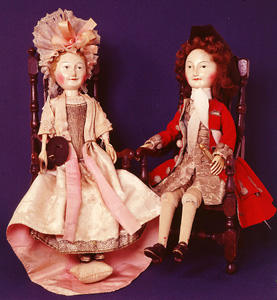
Some dolls of the 1600’s and 1700’s were strictly adult amusements. In the 1700’s, for example, French nobles played with dolls called pantins. A pantin was a jumping jack—a cardboard or wooden figure made to move by pulling a string attached to its arms and legs. At the end of the 1700’s, dolls made of cardboard were mass-produced, especially in France.
The 1800’s
brought dramatic changes in adults’ attitudes toward children, which greatly affected the history of dolls. Adults came to consider play important to children’s development and so provided them with more dolls and other toys.
Toymakers of the 1800’s created new kinds of dolls using a variety of materials. The major material that makes up a doll’s head determines how it is grouped. Doll groupings include wooden dolls, cloth dolls, papier-mâché and composition dolls, wax dolls, rubber dolls, and porcelain dolls.
Wooden dolls
from an area of Austria called the Grodner Tal (now part of Italy) were the most common commercial dolls in Europe and the United States during the early 1800’s. Some English-speaking people called them Dutch dolls. This name may have come from the German word Deutsch, which means German. The dolls may also have received their name from the fact that many were shipped from the Netherlands by Dutch merchants. Some collectors today call them pegwooden dolls because wooden pegs hold the joints together.
The earliest pegwoodens were carefully made, with carved hairstyles and with joints that turned smoothly. Most people bought them without clothes and dressed them at home. The dolls gradually became poorer in quality. The last ones, made in the early 1900’s, were splintery and easily broken.
Cloth dolls
of the 1800’s included soft cloth dolls and dolls with stiffened-fabric heads. Beginning in 1831, books offered instructions on how to make cloth dolls at home. Later, magazines of the 1870’s and 1880’s, such as Ladies Home Journal and The Delineator, gave instructions for making dolls. Some of these dolls had smooth faces. Others had needle-sculptured faces—three-dimensional facial features created by stitching into the doll’s stuffing. The commercial manufacturers of stiffened-fabric cloth dolls in the 1800’s were Izannah Walker, George Hawkins, and Martha Chase, all of the United States. Beginning in 1889, Celia and Charity Smith of the United States designed doll patterns that were printed on cloth. The purchaser then cut out and sewed the doll together at home.
Papier-mâché and composition dolls
were made by mixing a variety of ingredients. Papier-mâché chiefly consists of paper or wood pulp mixed with glue and clay or flour. Composition is a mixture chiefly of resin (sticky liquids taken from plants), sawdust, starch, and water. The resin, starch, and water form a gluelike substance. These mixtures are easily molded while wet and become hard and strong when dry. With the use of molds, it became easy to produce large quantities of dolls.
German factories began to mass-produce papier-mâché head-and-shoulder units for dolls in the early 1800’s. Some of these shoulder-heads were bought by people who attached homemade bodies to them. Most papier-mâché dolls were made in factories as complete dolls with wooden arms and legs and bodies of a thin leather called kid. These dolls lacked any joints. Most of them represented girls or women, and many had the fancy hairstyles of the time. Many were sold already dressed as children or adults. A few with simple molded hairstyles were dressed as men in top hats and knee-length, full-skirted frock coats. Papier-mâché dolls became highly popular. German toymakers produced large quantities of them until the mid-1800’s.
The first doll patented in the United States had a shoulder-head made of papier-mâché reinforced with cloth. Ludwig Greiner, a German-born toymaker in Philadelphia, patented it in 1858.
Composition dolls replaced papier-mâché dolls by about 1860. Most of the early composition dolls had a thin coating of wax to imitate more expensive wax dolls.
Wax dolls
are among the most fragile dolls. They break easily, and the wax melts or cracks in unsuitable weather. When wax was reinforced with papier-mâché or composition, the dolls were more durable but not as artistic. Wax was used to cover almost every kind of material to make dolls and improve their appearance.
Early in the 1800’s, toymakers made waxed dolls’ heads. Many of these heads had glass eyes and slits in which to insert hair. The eyes of some of these dolls could be opened and closed by pulling a wire. The early dolls had arms of colored kid representing long gloves. Later dolls came with limbs of wood or composition. Some of these dolls had fancy hairdos of human hair or mohair (hair from the Angora goat). Others had hairdos and bonnets molded and waxed like the rest of the head.
Waxworkers made the dolls by pouring liquid wax into a mold and allowing the wax to harden. Some of the finest wax dolls were made this way in England by two famous doll-making families, the Montanaris and the Pierottis. These expensive dolls had hair inserted strand by strand and faces modeled after real people. For the Great Exhibition of 1851 in London, Montanari made wax dolls that represented the children of the British monarch, Queen Victoria.
The first baby dolls also appeared at the 1851 exhibition. They were made in Japan. Many had a wax head or a head of other material dipped in wax. The head had a few painted wisps of hair. The cloth-covered body contained a squeak box. This box allowed the doll to make a noise that sounded similar to crying.
Rubber dolls.
In 1839, Charles Goodyear, a Connecticut inventor, developed a process that made rubber stronger and gave it resistance to heat and cold. This process was called vulcanization. Dolls made of rubber were most popular in the 1850’s and 1860’s. When a rubber doll was new, it was an ideal toy because it would not break and was soft to touch. When the doll was old, however, the rubber fell apart. Very few exist today. Manufacturers used the same rubber-doll molds over long periods of time. Thus, experts find it hard to date any rubber doll that still exists unless it has its original clothing.
Porcelain dolls.
In the 1840’s, ceramics factories in Germany and Scandinavia began to make doll heads in glazed porcelain. Porcelain, often called china, is a type of ceramic highly valued for its beauty and strength. Most heads were of girls or women with pretty faces, pale skin, and dark hair. Matching porcelain arms and legs were also made. But many of the cloth bodies were made at home. The manufacturers also made complete porcelain dolls, now called Frozen Charlottes. The name comes from a popular American folk song of the 1840’s that describes a young woman named Charlotte who freezes to death during a winter sleigh ride.
About 1860, French doll makers began to produce costly dolls known today as fashionable dolls because of their elaborate clothes. The dolls were then called poupées (the French word for dolls). Most of them represented elegant young women or older girls. They were made with great artistry. They had unglazed or glazed porcelain heads, and some had matching porcelain limbs. Most of them had firmly stuffed kid bodies. More costly dolls had jointed wooden bodies, which were painted or covered with kid. A French doll-making firm called Gesland used a jointed body covered with a padded, knit fabric “skin.” Many dolls made by Maison Huret, another French firm, had bodies of a rubberlike substance called gutta-percha. 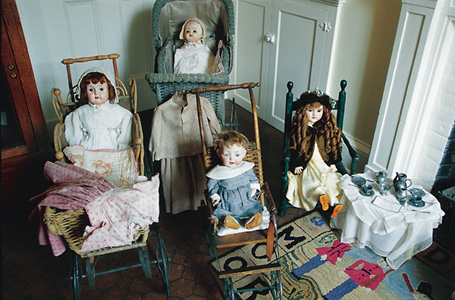
A fashionable doll that was dressed usually cost three times as much as the same doll wearing only its chemise (shirtlike undergarment). European stores sold the clothes and accessories for these dolls. The accessories included combs, fans, furs, and jewelry. Many dolls had trunks or pieces of furniture to hold their belongings.
In Germany in the 1860’s, unglazed porcelain became fashionable for dolls’ heads. This material was also called bisque or biscuit. Most bisque shoulder-heads for dolls had elaborate molded braids, curls, and ringlets decorated with combs, flowers, insects, jewels, or ribbons. Unlike the dark-haired porcelain dolls, most bisque-head dolls with molded hair were blond. Often the same mold was used for both the glazed and unglazed versions of the doll. During the 1890’s, a much cheaper doll was made from a coarse bisque called stone bisque. Some of these dolls, known as bonnet dolls, have hats molded onto their heads. 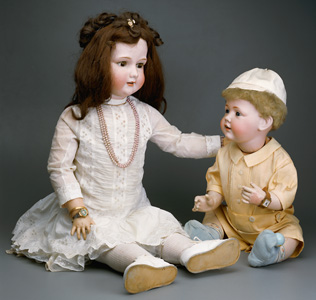
During the 1870’s, French doll makers began to make dolls with the body and facial features of children about 4 years old. These dolls were called bébés, a French word meaning babies. Most bébés were named after their manufacturer. For example, a firm founded by Leon Casimir Bru made Bébé Bru. A company headed by Emile Jumeau manufactured Bébé Jumeau. Many bébés had a new kind of body consisting of a hollow trunk and ball-jointed limbs strung together with elastic. This construction allowed a doll to hold more natural, childlike poses.
Inventions.
Many doll manufacturers of the 1800’s developed mechanisms that allowed the dolls to behave in a lifelike manner. One of the earliest devices made it possible for a doll to say “mama” and “papa.” German inventor Johann Mälzel patented the device in 1824. In 1862, several designers—including Americans Enoch Rice Morrison and Joseph Lyon—patented dolls that could walk. In 1878, Elie Martin of France patented a doll that could swim. In 1879, doll maker Leon Casimir Bru patented Bébé Teteur, a doll that nursed, and Bébé Gourmand, a doll that consumed food. In the 1880’s, American inventor Thomas Edison built a record player reduced in size so that it could fit inside the body of a doll and make it talk. Other patents included those for dolls with eyes that could wink.
Rivalry in the doll industry.
Most porcelain dolls’ heads for the French trade were made in Thuringia, Germany, until the late 1860’s. At that time, François Gauthier (later spelled Gaultier), a French porcelain manufacturer, began to make bisque heads for dolls. In the mid-1870’s, Frenchman Emile Jumeau, who also had a porcelain factory, created the famous Jumeau bébés. Gaultier and Jumeau made most of the bisque heads used on the French dolls of the late 1800’s.
German manufacturers soon copied the Jumeau bébés. They were able to produce dolls that were less artistic and less expensive. The Germans had learned how to pour slip (clay thinned with water) into the mold rather than press it into the mold as the French were doing. Pressing slip into the mold is a more expensive method. Soon the German manufacturers began to succeed at the expense of the French manufacturers. About 1890, Jumeau had to resort to using the cheaper poured-slip method for making the heads of his bébés. By 1899, the various French doll makers combined for economic reasons into the Société Française de Fabrication de Bébés & Jouets. Germans gained control of most of the doll business in France, England, and the United States.
The early 1900’s
produced a great variety of new dolls in a variety of materials. Bisque heads on composition bodies were the favorites. However, doll makers also used composition heads. Composition dolls were often described as unbreakable. But composition cracked in time and was not as durable as bisque.
Before World War I.
The emphasis in doll manufacturing during the early 1900’s was on lifelike appearance. Teachers and artists began to criticize the fashionable dolls as unnatural and unappealing to children. In Munich, Germany, a group of artists started a movement called Puppen Reform (doll reform). These artists designed all-composition dolls that were simple and natural. German doll makers Kämmer & Reinhardt and other firms manufactured dolls with bisque heads that were called character dolls because their faces showed realistic expressions.
Wooden dolls also reflected this shift towards lifelike dolls. In China, carved Door of Hope dolls had faces and clothes similar to what could be seen in that country. Chinese women at a Christian mission, the Door of Hope, in Shanghai, made these dolls. In 1911, Albert Schoenhut, a German-born toymaker of Philadelphia, patented his All-Wood Perfection Art Doll. The doll’s joints had steel springs that enabled it to hold lifelike poses. Most Schoenhut dolls represented children or infants with realistic faces.
In 1909, an American illustrator named Rose O’Neill published a drawing of a character with large round eyes, a pug nose, and a curved-line mouth. O’Neill modeled the figure on her baby brother and called it Kewpie, a form of the word Cupid. In 1913, doll manufacturers began producing Kewpie dolls. Kewpie dolls had small tufts of molded and painted hair, blue wings, and starfish-shaped hands. Millions of Kewpie dolls were made in bisque, Celluloid (an early plastic), composition, and other materials.
After World War I broke out in 1914, dolls from France and Germany were difficult to obtain. Doll makers in the United States tried to fill the doll-manufacturing gap. One success appeared in 1915, when a New York City political cartoonist, Johnny Gruelle, obtained a design patent for a cloth doll named Raggedy Ann. Ann’s twin brother, Raggedy Andy, appeared later. Both dolls became known by their red-and-white striped legs, red yarn hair, and shoe-button eyes. Gruelle wrote a series of books about their adventures, beginning with Raggedy Ann Stories (1918). In general, however, U.S. manufacturers lacked skill and experience in producing dolls, and necessary materials were difficult to obtain.
After the war, artists were successful with felt dolls, such as Lenci dolls from Italy and Chad Valley dolls made in England. Germany’s economic problems in the early 1920’s hindered the recovery of the German doll-making industry.
Dolls modeled on newborn babies became popular in the 1920’s. One of the most successful was the Bye-Lo Baby, first copyrighted in 1922 by an American sculptor named Grace Storey Putnam. Putnam used a newborn infant as a model, copying its half-closed eyes and fat neck. The first of these dolls had heads of wax. The dolls were later made of bisque, Celluloid, composition, rubber, and wood. The Bye-Lo Baby became one of the most popular dolls ever and was known as the “million-dollar baby.”
Doll makers produced a number of other newborn baby dolls. The German firm Armand Marseille made the bisque heads for many of these dolls. They included My Dream Baby, produced by the U.S. firm Arranbee; and Rock-a-Bye Baby, made by the German firm Cuno & Otto Dressel. Both of these dolls came in either a closed-mouth or an open-mouth version.
The rise of motion pictures in the early 1900’s led to the popularity of portrait dolls. These were dolls made to resemble well-known people or fictional characters. Among the most famous portrait dolls were those representing movie stars Charlie Chaplin, Jackie Coogan, and Shirley Temple.
Modern dolls.
Plastic dolls appeared in the late 1940’s, and plastics quickly became the most popular material for dolls. They first appeared in a hard form and then later as a soft material. One of the earliest soft plastic dolls was Sparkle Plenty, a doll with long blond hair and latex skin. The doll was based on a character in the “Dick Tracy” comic strip. Eventually, the soft plastic material called vinyl replaced latex in dollmaking.
The 1950’s
saw a large growth in doll sales because of the large number of children born after World War II (1939-1945). Seeking to sell to the large market, manufacturers produced a wide variety of dolls. Popular dolls included Ginny by Vogue Dolls; Toni, Betsy Wetsy, Saucy Walker, Miss Revlon, Little Miss Revlon, and Patti Playpal by the Ideal Toy Company; and Betsy McCall, Sweet Sue, and Whimsies by the American Character Doll Company. Other popular dolls were Alexander-Kins and Cissy by Madame Alexander. Many doll collectors consider the 1950’s the golden age of modern dolls.
Television influenced how dolls were advertised and which celebrity dolls were produced. Dolls were made of television characters and performers, such as a wooden puppet named Howdy Doody; the character Little Ricky (Ricky Ricardo, Jr.), from the “I Love Lucy” television show; and ventriloquist Shari Lewis.
The most successful doll of all time, Barbie, first appeared in 1959. Based on a German doll named Bild Lilli, Barbie is a teenage fashion doll with a huge wardrobe that has to be purchased separately. Barbie is made by Mattel, Inc. and continues to be extremely popular today. 
The 1960’s.
Improved technology allowed doll manufacturers to add mechanical features to dolls. These features allowed a doll named Tressy to have hair that appeared to grow, Thumbelina to wriggle, and Chatty Cathy to talk. Many dolls were powered with batteries.
G.I. Joe became the first doll marketed to boys. G.I. Joe was a U.S. military figure available as a soldier, sailor, astronaut, or pilot. The Hasbro Toy Company introduced him in 1964. Hasbro called the toy an “action figure” to make the doll more acceptable to boys. G.I. Joe had movable joints so he could be posed in various positions. G.I. Joe continues to be popular.
The 1970’s.
Popular dolls included Crissy, by Ideal, who, like Tressy, had hair that appeared to grow. For part of 1972, Kenner made a doll named Blythe, whose large eyes could change color. Hasbro began to make reproductions and new versions of the Blythe doll in the early 2000’s.
The 1970’s brought renewed interest in dolls that looked homemade, such as a rag doll called Holly Hobbie. Her character began as a greeting-card illustration drawn by an artist named Holly Hobbie in 1967. Knickerbocker first produced the doll in 1974. A number of books featuring the Holly Hobbie character were also published.
The 1980’s.
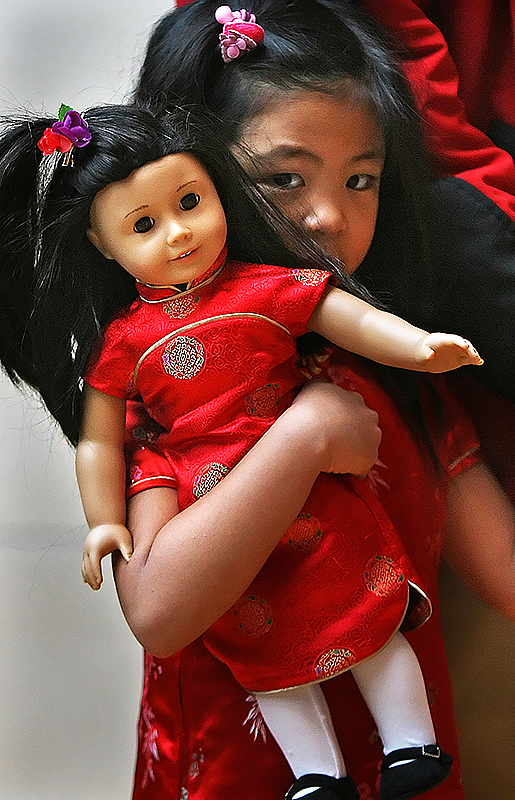
Cabbage Patch dolls became the rage in the 1980’s. Each doll came with a “birth certificate” so that the owner could “adopt” the doll. In 1986, the Pleasant Company introduced an extremely popular line of dolls, American Girl. The dolls represent girls from different times in United States history and come with books telling their story. American Girl dolls continue to be popular today.
The 1990’s.
In children’s dolls, the company My Twinn furthered doll customization. In 1993, the company began producing dolls with the same facial shape, eye color, hair color, hairstyle, and skin tone as the child who would own it.
During the 1990’s, the collecting public acknowledged dolls as works of art and paid high prices for them. Talented artists, such as Anne Mitrani, Regina Sandreuter, Helen Kish, Sonja Hartmann, and Susan Krey, produced lifelike dolls that sold for thousands of dollars. Realistic, expensive baby dolls by artists Rolanda Heimer, Susan Wakeen, Julie Good-Kruger, Lee Middleton, Yolanda Bello, and Kathy Barry-Hippensteel were sold in limited numbers to collectors.
Fashion dolls, such as Tyler Wentworth by the Tonner Doll Company and Alex Fairchild Ford by Madame Alexander Dolls, became popular with collectors. The first of a number of 15- to 16-inch (38- to 41-centimeter) vinyl dolls was Gene Marshall, a glamorous fictional Hollywood star from the 1940’s designed by Mel Odom for Ashton-Drake Galleries. These fashion dolls seem to recapture the thrill collectors experienced dressing Barbie dolls when they were younger.
Dolls that represented the international community were another theme of the 1990’s. Artists such as Heidi Ott and Annette Himstedt made dolls that looked like children of the world in many nationalities.
The 2000’s.
Barbie got a serious competitor in 2001 with the arrival of Bratz fashion dolls by MGA Entertainment. These vinyl teen dolls have extremely large heads and thin bodies, and range from 10 to 24 inches (25 to 61 centimeters) tall. In 2015, Mattel introduced “Hello Barbie,” a doll equipped with technology enabling it to engage in conversation. In the 2010’s, Mattel also introduced Barbie dolls with different body types and varied skin tones; Barbies with disabilities; and a line of gender-neutral, customizable dolls. Such dolls were meant to help make children more confident about their own body image and better reflect real-life diversity.
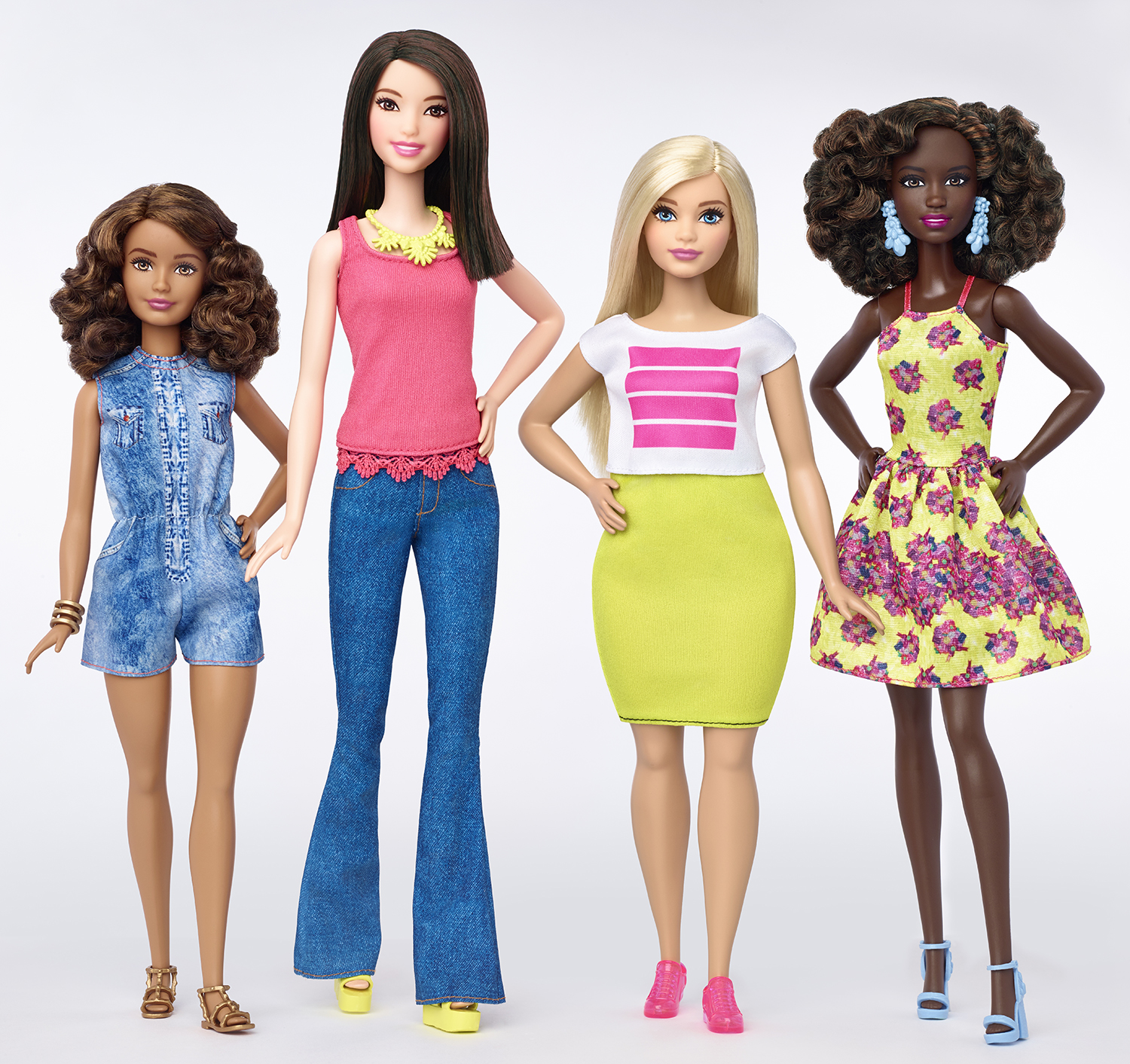
Ball-jointed dolls (BJD’s) created in Japan took doll customization to a new level in the 2000’s. An American manufacturer, Goodreau Doll, began producing these dolls from resin. They have changeable eyes, hair, and limbs. Depending on the combination chosen, the dolls could represent an anime character—based on a form of Japanese animation—or a child, teenager, or celebrity.
Manufacturers made reproductions of popular 1950’s dolls, such as Vogue Doll’s Ginny and 14-inch (35-centimeter) Toni as well as paper dolls. Other reproductions included “1980’s Strawberry Shortcake,” based on a greeting-card character, and Polly Pocket dolls.
The doll industry today
The creation of a modern doll begins in a doll manufacturer’s design department. There, artists sketch ideas for new dolls. After company executives select a design, the design department sculpts a full-sized clay or wax model of the doll. Mold makers then form metal molds from the model. In most cases, they make separate molds for the body, head, arms, and legs.
Most doll parts are molded from vinyl or other plastics. The chief molding processes are blow molding and rotational molding. In blow molding, a machine squeezes hot, softened plastic into a mold. A blast of compressed air forces the plastic outward against the mold’s cool walls, where it hardens. In rotational molding, a worker squirts powdered plastic resin into a mold. The mold is put in an oven and rotated so the plastic melts and covers the inside walls of the mold. The plastic hardens as it bakes.
The molds are then opened, and the doll parts are removed. Workers paint facial features and add hair to the heads. Assembly-line workers attach the heads and limbs to the bodies, dress the dolls, and pack them. Dolls’ outfits are either made in the same factory or purchased from doll-clothing manufacturers. Most doll clothing is redesigned every year to keep up to date with fashion trends.
There is strong competition among doll manufacturers. Many manufacturers introduce several new dolls and outfits each year. Companies spend large amounts of money annually on advertising, mostly television advertising, to create a market for their dolls.
Today, most dolls are made in China, Indonesia, Mexico, South Korea, Taiwan, and Thailand.
Doll collecting
Doll collecting is one of the most popular hobbies in the world. Collectors usually specialize in one time period or type of doll. The price of antique dolls can be several thousand dollars. Antique dolls can be bought at auctions, antique shops, doll shows, flea markets, and online through auction sites or online retailers.
Anyone planning to collect dolls should learn as much as possible about dolls before he or she buys. A collector needs to learn how to identify and value specific dolls. Collectors learn about dolls through books, magazines, museums, the Internet, and doll shows.
A doll collector should try to buy dolls that are wearing their original clothing. It is good for a collector to also know the provenance (history) of the particular doll he or she is buying. Collectors value a doll more highly if it is in the original box in which it was sold. It is important to keep a doll’s labels and tags and to store dolls away from sunlight and dust.
Doll collecting became especially popular in the 1990’s. As the economy soared in the 1990’s, so did doll manufacturers’ offerings. Dolls became available through the Internet and through television channels that offered shopping. The market for collectible dolls also grew as collectors had surplus money to spend.
Collector houses, such as Ashton-Drake Galleries, Danbury Mint, and Franklin Mint, offered limited numbers of porcelain dolls they had designed. These dolls were sold as “collectible” but generally have not increased in value.
As an indication of how far doll collecting had come, the United States Postal Service issued a stamp set in 1997 featuring 15 American dolls, including Raggedy Ann. The doll stamps sold quickly because of the huge interest in doll collecting.
There are several magazines that focus entirely on dolls. Doll Collector, Antique Doll Collector, and Dolls are based in the United States. Other magazines include The Dolls’ House Magazine from the United Kingdom, Puppen und Spielzeug (Dolls and Toys) from Germany, and Australian Dolls, Bears and Collectables.
Dolls in museums
Many museums throughout the world have doll collections. The largest collections are the V & A Museum of Childhood in London’s Bethnal Green, the Musée de la Poupée in Paris, the German National Museum and the Toy Museum in Nuremberg, and the German Toy Museum in Sonneberg.
The museums in the United States that are known for their doll collections are the Strong National Museum of Play in Rochester, New York; the Shelburne Museum in Shelburne, Vermont; the Wenham Museum in Wenham, Massachusetts; the Children’s Museum of Indianapolis; and the Boston Children’s Museum. Other museums have collections of dolls that are kept in storage and brought out for special displays, usually around the winter holidays.
